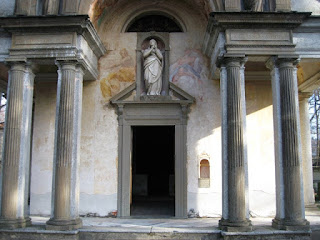 |
| Villa Pisani, River Brenta, Venice |
I'm so happy to stay with you and share my personal emotions and experience in My Own Italy!
 |
| Villa Pisani (Venice) |
Villa Pisani.
Villa Pisani, also named The Nazionale, is certainly one of the most famous examples of Venetian Villa along the Brenta banks. It is situated in the municipality of Stra, in the province of Venice.
The Pisani of St. Stephen, who were responsible of the construction of this villa, were an important branch of the family Pisani, an ancient Venetian noble family.
 |
| The bedroom of Napoleone |
In 1807 Villa Pisani became Napoleone Bonaparte’s property, in fact he bought it from the Pisani family and sold it then to the Italian Viceroi Eugène de Beauharnais.
 |
| Carlotta @ Villa Pisani |
If you want to visit this masterpiece of eighteenth-century, I suggest you to expect at least half a day of quiet time to visit the interior of Villa Pisani and enjoy the pleasure of the beautiful garden: the park of Villa Pisani as been awarded in the 2008 as “the most
beautiful park in Italy”.
| The Orangerie, Villa Pisani |
The park offers incredible scenarios, original
architectures, green houses and also the famous labyrinth.
At the end of the park there is the "orangery". In fact, according to mythology, Hercules was so strong because he ate citrus.
For this reason, each Doge or the King wanted to eat citrus all year also in cold climates: they created the greenhouses in winter to keep the lemon and orange trees!




















































